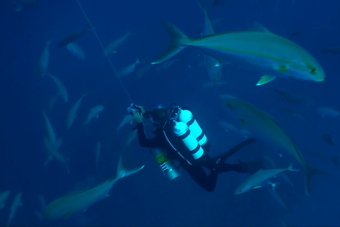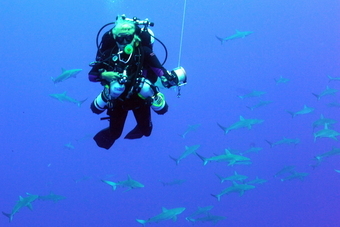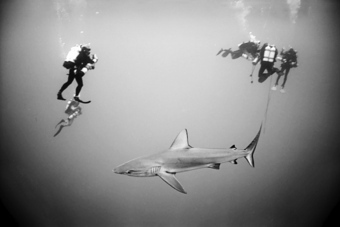Publications:
Papastamatiou et al. 2015
Marine predators will often perform diel and seasonal movements associated with specific habitats. In tropical areas, mesophotic coral reefs may be an important habitat type for many predators, but their use of these areas has rarely been investigated. We used results of acoustic telemetry and stable isotope analyses to investigate the diel and seasonal movements of Galapagos sharks Carcharhinus galapagensis and giant trevally Caranx ignobilis captured from a mesophotic reef (depth: 50 to 70 m) at an uninhabited Pacific atoll. All predators associated with mesophotic reefs performed horizontal and vertical movements over seasonal and diel time frames. Galapagos sharks performed reverse diel vertical movements, diving deeper during the night than during the day, while giant trevally displayed a mix, with some individuals performing regular diel movements (deep during the day, shallow at night) and others performing reverse vertical diel movements. Trevally used very shallow water during the summer spawning periods. The isotopic compositions of predators suggest they primarily forage in shallow reefs, although approximately 35% of resources came from mesophotic reefs. Similar to their variability in vertical movement strategies, giant trevally occupied a wide range of trophic positions, potentially due to individual specialization in diet and high levels of intra-specific competition. Mesophotic reefs may provide some prey to upper level predators but also serve as a refuge habitat. The frequent movements between habitats suggest that marine predators may function as significant transporters of nutrients, particularly from shallow to mesophotic reefs.
0- 70 m
Mesophotic “mentions”
86 x (total of 7569 words)
Classification
* Presents original data
* Focused on 'mesophotic' depth range
* Focused on 'mesophotic coral ecosystem'
Fields
Ecology
Physiology
Behavior
Focusgroups
Fishes
Locations
USA - Hawaii
Platforms
Acoustic Telemetry
SCUBA (open-circuit or unspecified)
SCUBA (open-circuit or unspecified)






